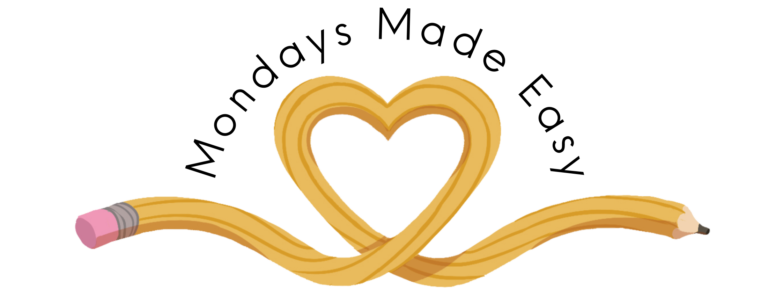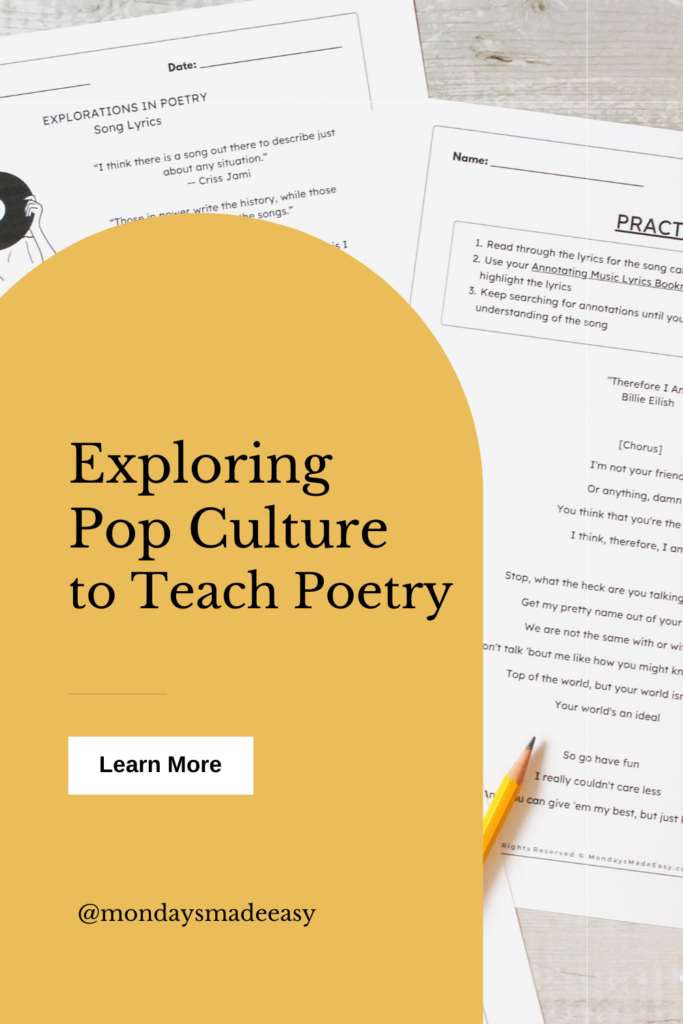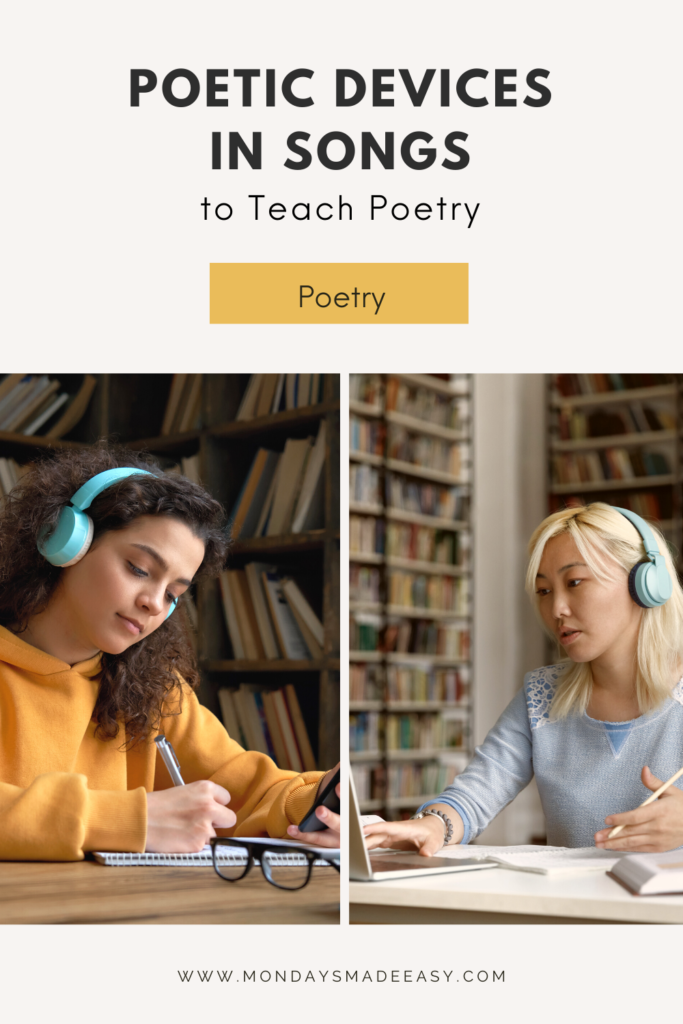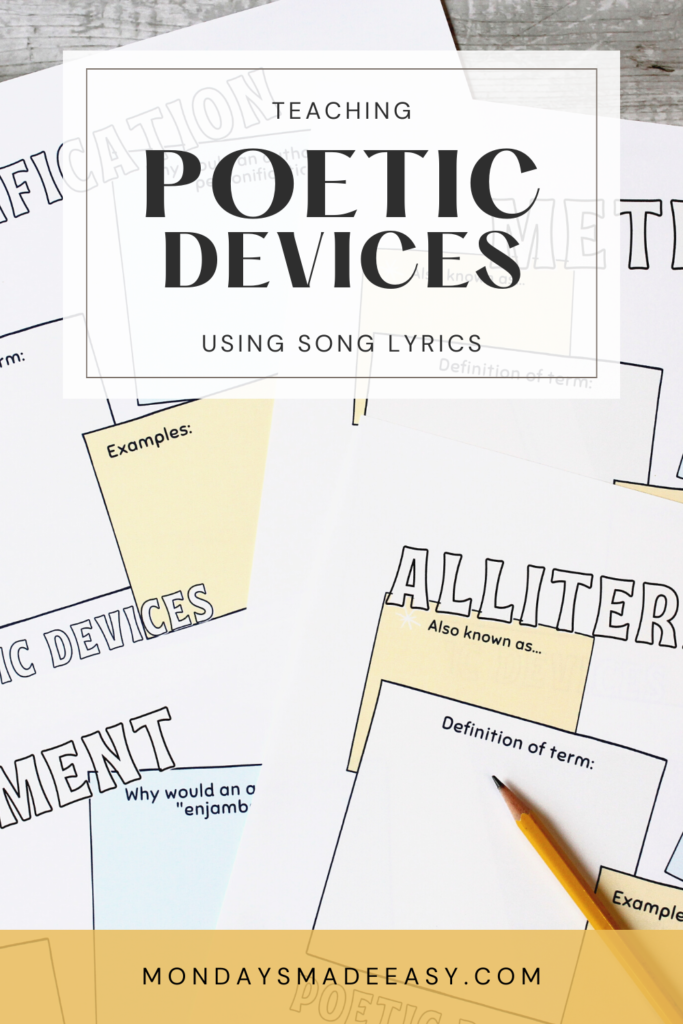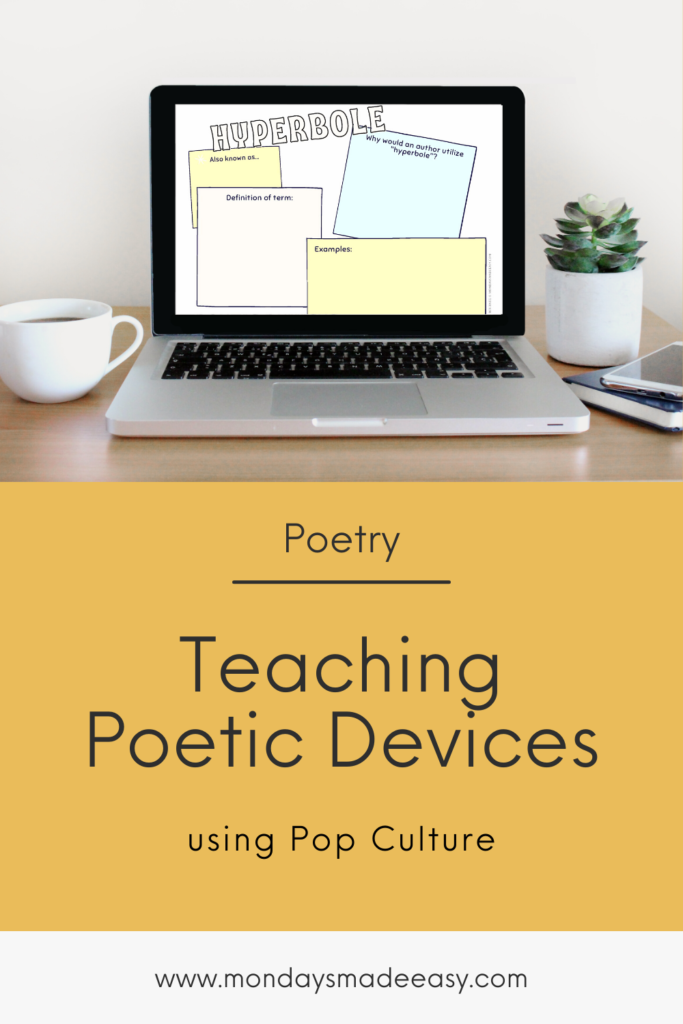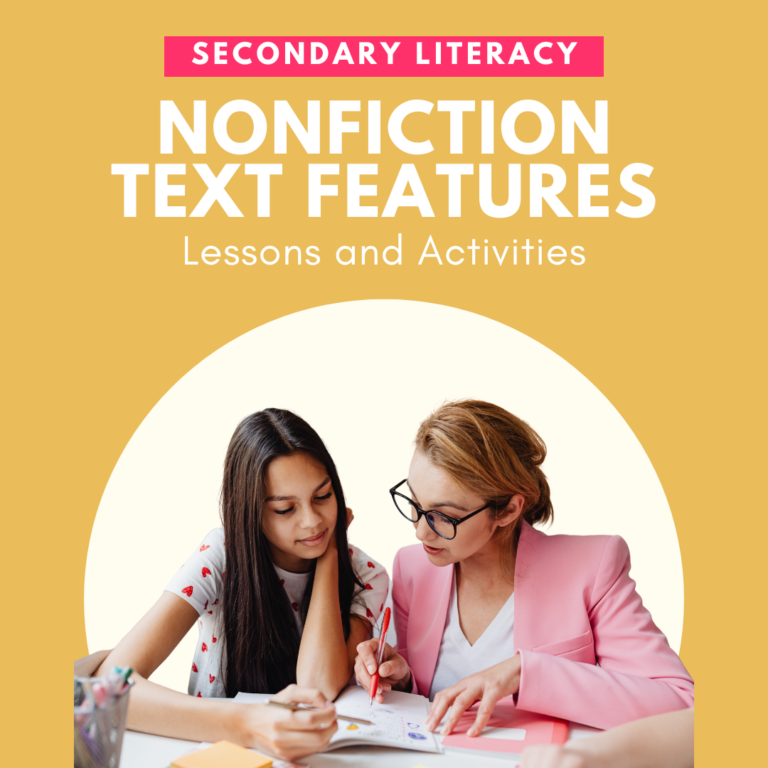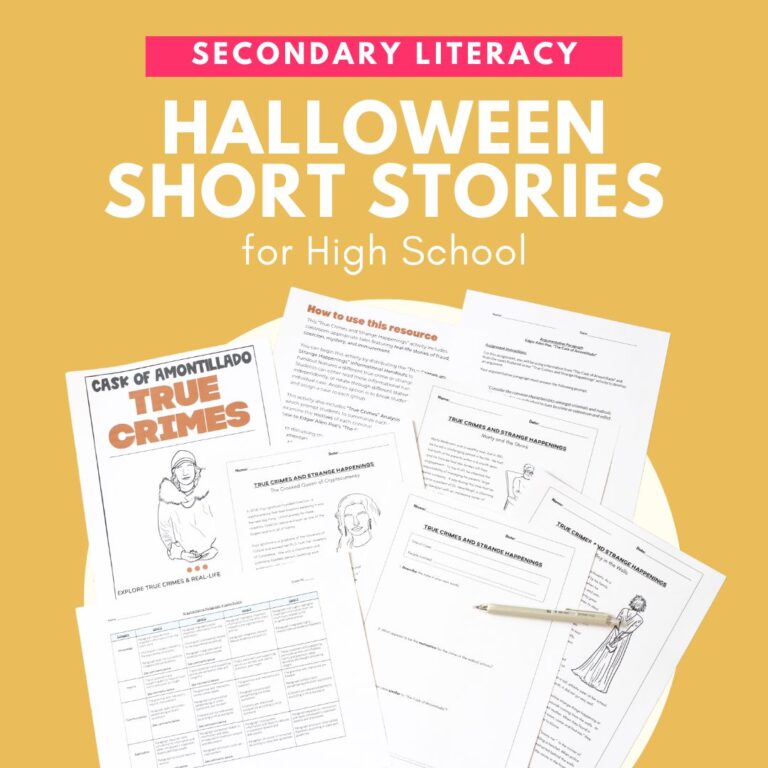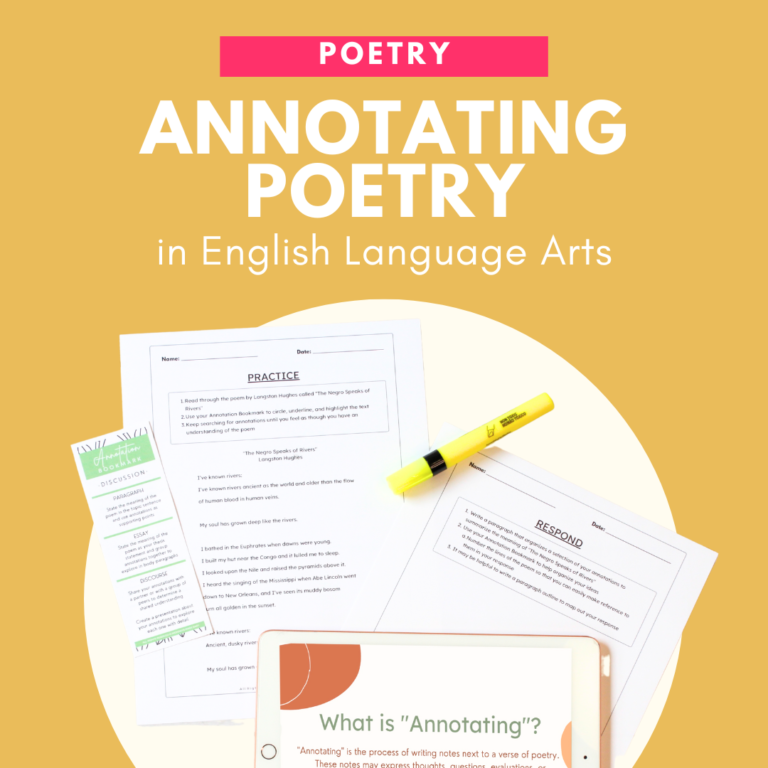If you are a teacher on the hunt for poetic devices in songs, then it seems as though you’ve discovered one of the best strategies for teaching students poetry! Song lyrics are one of the most effective ways to engage students in your poetry unit. They are also a great way to explore examples of poetic devices in popular culture. In this blog post, you’ll learn how to use poetic devices in songs to teach students poetry. You’ll also find a few lesson plan ideas and resources with examples of poetic devices in popular song lyrics.
How do you encourage learners to read poetry?
A few years ago, I took over a classroom for a teacher who was on maternity leave. She was absolutely thrilled at the timing of her leave because she was just about to begin her unit on poetry. “I hate poetry, and I don’t know how to teach it,” she admitted to me. I was surprised by this – there are a lot of subjects I’m reluctant to teach, but I always found teaching students poetry to be rewarding. Poetry is short, it is forgiving with grammar, and it relates to one of my students’ deepest passions: music.
Of course, not every student enjoys the subjective nature of poetry. A poem can be read with many different interpretations. Depending on the student, this is either a dream or a nightmare! It’s true that teaching poetry analysis can be challenging for students and teachers alike. This is why it is a great idea to start within your students’ comfort zones.
Not every student feels comfortable with analyzing poetry, but almost all of them have an artist or song that they adore. If you were to ask them what their favorite song is about, I’m sure they would have a lot to say! They might even offer a few inferences based on their understanding of the artist’s biography or cultural references. We can use this excitement to hook them on reading poetry.
How do you identify a poetic device?
To help learners to read poetry, you will first need to explore the elements of poetry with your students. You will then need to teach them how to analyze a poem. This will involve being able to identify a poetic device.
To identify a poetic device, students will need to understand the terminology involved. Some terms that can be helpful to know include: alliteration, anaphora, assonance, consonance, double entendre, enjambment, imagery, juxtaposition, metaphor, meter, mood, personification, simile, and tone (to name a few!). Understanding these poetic devices can also enhance students’ analysis of poetic devices in songs, as many of these terms apply to both poetry and lyrics.
To solidify essential terminology, you can facilitate a vocabulary word wall. You can create templates for each poetic device and include a prompt to have students define the term and find an example. You can also use these pre-made poetic device word wall templates, which include a comprehensive answer key to consolidate this activity.
Have each student fill out the vocabulary worksheets independently by creating individual workbooks. Alternatively, you can turn this into a collaborative activity by having students define different terms in groups. Students can then present their terms to the class before hanging them up on the word wall.
Once students have completed this activity, they will have a poetic device anchor chart in your classroom. Students can refer to this anchor chart during the entire unit on poetry and when analyzing poetic devices in songs.
How do you teach poetry analysis?
Now that students have explored the terminology of poetic devices, they can dive deeper into poetry analysis. To teach poetry analysis, you will need to show students how to annotate poetry. You can continue to use students’ favorite song lyrics to hook them with this lesson, focusing on poetic devices in songs as a practical application.
You can use these informational handouts to teach poetry analysis. These handouts will guide students through a lesson on the relationship between poetry and song lyrics. It will also show students how to annotate poetry. You can scaffold annotating poetry by modeling the process using the lyrics to “Therefore I Am” by Billie Eilish. This resource includes an annotated example that you can use for reference.
Students can then select their own song lyrics to analyze. You can use this free poetry analysis bookmark as an individual anchor chart for this activity.
Finding Examples of Poetic Devices in Songs
You can find virtually any type of figurative language in songs. So long as there are lyrics, you will find poetic devices in every genre of music.
There are several resources online that explore poetic devices in songs:
- I especially like Repeat Replay’s Top Picks: Songs with Figurative Language. This article highlights poetic devices in classic songs from the last few decades in music, including Simon and Garfunkel, Louis Armstrong, and Queen.
- LiteraryDevices.Net also shares modern examples of poetic devices in songs, including Katy Perry and Demi Lovato.
- Power Poetry also features a few poetic devices with examples that your students are sure to recognize! If they are fans of Lana Del Ray, Taylor Swift, or Billie Eilish, then they will love exploring these examples.
- If your students are more mature, Rap Genius has an incredible glossary of literary devices in hip-hop songs. Hip-hop and rap are rich sources for exploring the artful use of language. Given the explicit nature of many songs within these genres, you will want to be sure that your classroom environment is a suitable place to share this resource.
Using Poetic Devices in Songs to Teach Poetry
If you’re a fan of teaching poetry, I hope this blog post has inspired a few new lesson plans and activities for your classroom. If you’re not – I hope studying poetic devices in songs converts you! It is sure to hook even your most reluctant learners and help make poetry a little more relevant to their lives.
